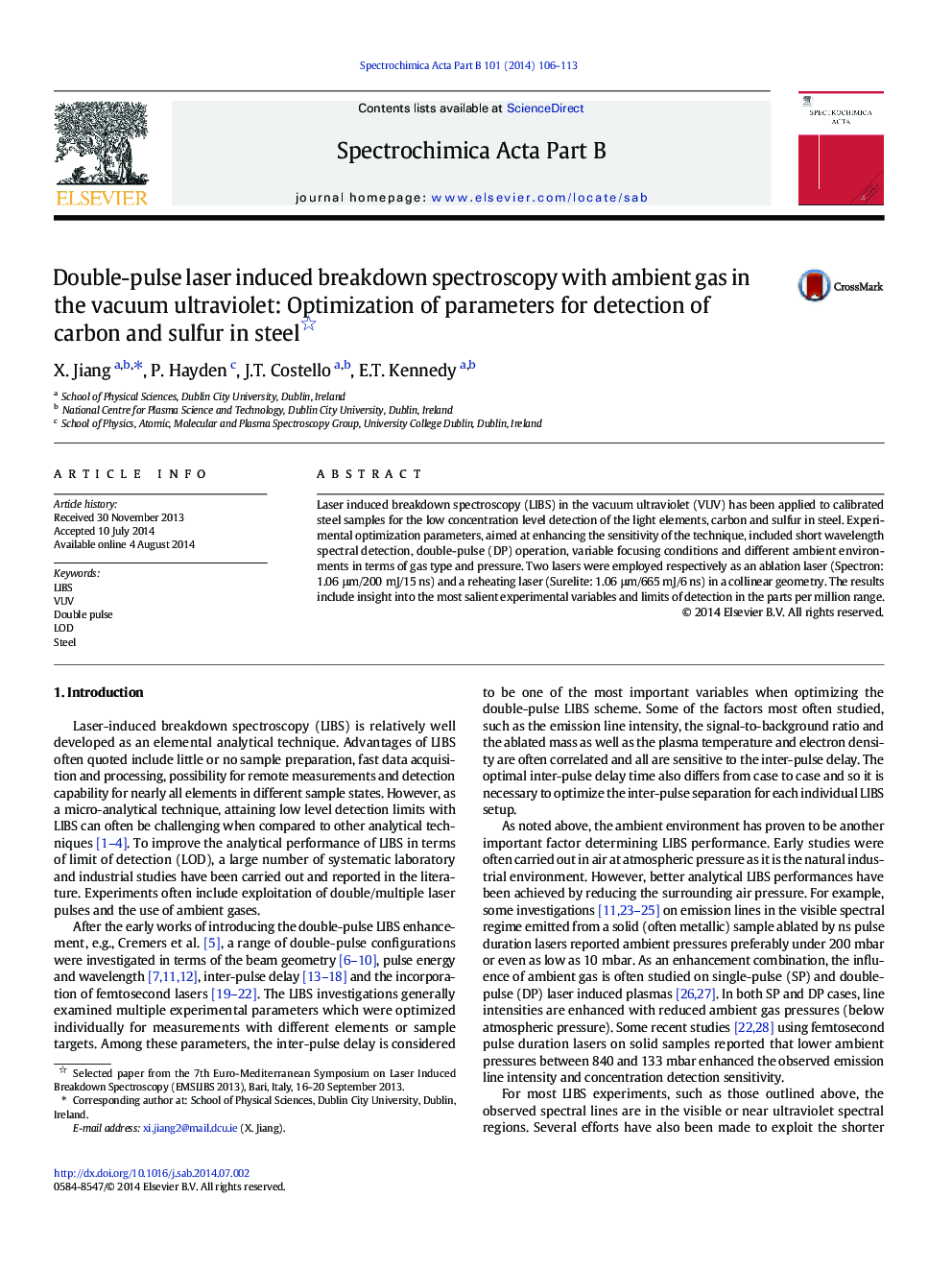| Article ID | Journal | Published Year | Pages | File Type |
|---|---|---|---|---|
| 7674453 | Spectrochimica Acta Part B: Atomic Spectroscopy | 2014 | 8 Pages |
Abstract
Laser induced breakdown spectroscopy (LIBS) in the vacuum ultraviolet (VUV) has been applied to calibrated steel samples for the low concentration level detection of the light elements, carbon and sulfur in steel. Experimental optimization parameters, aimed at enhancing the sensitivity of the technique, included short wavelength spectral detection, double-pulse (DP) operation, variable focusing conditions and different ambient environments in terms of gas type and pressure. Two lasers were employed respectively as an ablation laser (Spectron: 1.06 μm/200 mJ/15 ns) and a reheating laser (Surelite: 1.06 μm/665 mJ/6 ns) in a collinear geometry. The results include insight into the most salient experimental variables and limits of detection in the parts per million range.
Related Topics
Physical Sciences and Engineering
Chemistry
Analytical Chemistry
Authors
X. Jiang, P. Hayden, J.T. Costello, E.T. Kennedy,
